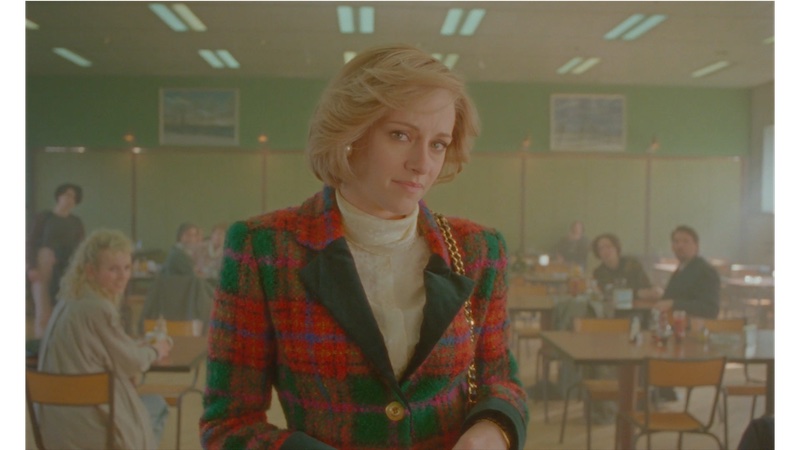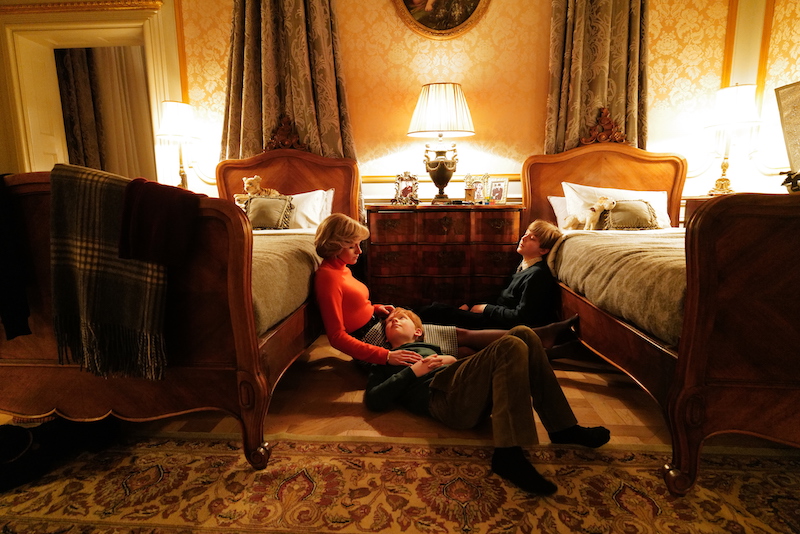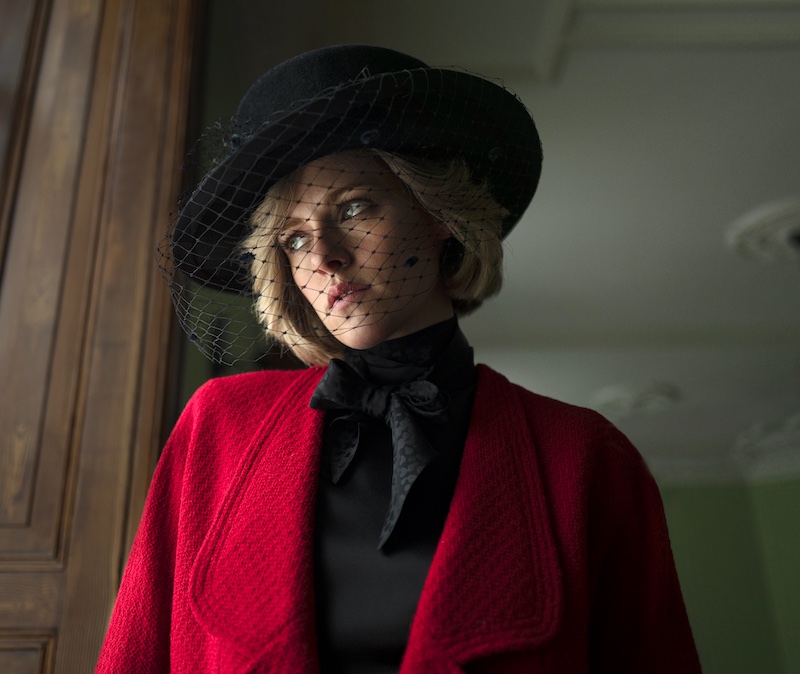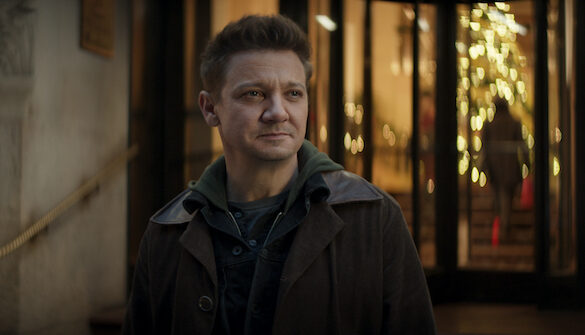Pablo Larrin’s “Spencer” reminds us about all the unseen amorphous tragedies that hide behind the beautiful elegance of royalty. For all the pains and sufferings each of his central high-profile female figures go through, there is a quiet strength that lets them persevere and break the shackles that’s been holding them back. In this film, the director deftly maneuvers through different plains of reality that allow us to see a Princess Diana that’s dying on the inside, all the while showcasing Kristen Stewart’s talents to hold our attention with each step that she takes and pearl necklace that she breaks.

Set in 1991 at the Sandringham House during the Christmas holiday, Princess Diana finds herself having to once again be a part of an archaic family tradition. With Diana’s marriage with Prince Charles growing ever so cold, and rumors of affairs and a divorce abound, peace is ordained for the Christmas festivities. But it becomes apparent that Diana will have to contend with putting on a brave face for her two sons, William and Harry, while also having to deal with the domineering men who script over her life.
Traditional film biopics tend to encompass a subject’s entire life and look key moments that could easily pulled from a Wikipedia page. But for “Spencer,” Larrín offers a focused yet fabled story that centers on the three days in question. Considering that there is no public record of what happened in those three days, the use of “a fable from a true story” tag in its opening makes sense. So, the film doesn’t have to be entirely true and tell a life story. Rather, it gives audiences an honest portrayal of a woman who is trying to survive an ordeal.
Living on the estate under such stringent rules that are justified as tradition is suffocating for anyone who isn’t accustomed to the lifestyle or willing to bend the knee. That choking sensation becomes more apparent when an ominous sign in the kitchen reads “Please keep noise to a minimum — they can hear you.” The staff from the dresses to the chefs in the kitchen are always listening and use the family’s words as a form of currency to give to Equerry Major Alistair Gregory (Timothy Spall), a watcher tasked with keeping anything salacious from being leaked out to the press.
As such, Gregory makes Diana’s life a living nightmare. Her defiance could damage the Royal Family’s sparkling clean image. So, it is easy to see why they are keeping her life so scheduled and scripted. In fact, this contentious relationship develops as soon as Diana steps foot into the Sandringham Estate, where Gregory coldly requests that she sit on a scale which he claims is a part of a traditional game. Since Diana has struggled with her body image and had a eating disorder, this “game” is a clear attack on her insecurities. What’s more, he may have left a book about Anne Boleyn, the second wife of Henry the VII who was beheaded, on Diana’s bed as a message that she needs to obedient or else.
So “Spencer” slowly reveals itself to be more of a fabled gothic story of survival. There’s his haunting atmosphere that lingers in the air like a specter roaming every corridor to the estate. Even the estate where the celebration takes place is ominous as Diana’s Park House childhood home isn’t too far from Sandringham. One could see this as a homecoming of sorts for Diana. Other’s may see it as a haunting invitation, as the house itself has been condemned. It has a ghostly call that she can’t ignore.
For the most part, “Spencer” is entirely a solo effort carried by Stewart’s performance. It’s not so much that Stewart becomes her, but it’s the actor being able to translate what’s on the pages of the script into a performance. Through her, we have a better understanding of the circumstances that created her traumas rather than an over-the-top showy act. Instead, the entire thing feels intimate, almost wholly organic as if she was really Diana reincarnate.

Though “Spencer” hinges entirely on Stewart, the film does have a few smaller supporting roles to help lift some of that extra weight. Sally Hawkins plays as Maggie, Diana’s royal dresser, and her closest confidant. As the shoulder to lean on, Maggie imparts words of wisdom and support whenever Diana is struggling. Then there’s Sean Harris, the estate’s elite chef, who is sympathetic to Diana’s predicament and warns her about the Royal family’s constant surveillance.
Because “Spencer’s” storytelling is designed to be like a fairy tale, the film has this fabled like textures. Each layer that takes us to a fantastical world of elegance in its location, fashion, food, and home. Though all of that may be beautiful to look at, it still creates this distance as it is a world that most of us will never see for ourselves. Despite that disconnect, the film is still Diana’s story to tell. Stewart grounds the film through her performance. And cinematographer Claire Mathon captures all of those emotions beautifully either through close-up shots of Diana’s facial expressions or the figure in the larger and wider shots. And the beauty and glamour of the estate itself, along with the gorgeous food and stunning clothes act as a visual juxtaposition to Diana’s internal suffering.
And Jonny Greenwoods score completes that transportation to the fairy tale world. Each piece of music rightfully adjusts to the scene with little to no effort. Though there are some lighter fares to help give the film some levity, a lot of the darker symphonic pieces set a darker and more somber tone to highlight Diana’s pain and the stringent Royal family lifestyle. In a way, the score is as much as a storyteller as the other narrative and technical aesthetics.
“Spencer” blends history and fantasy together for a beautifully gothic piece of storytelling that reveals the sheer strength of one woman living in a highly toxic environment that’s built entirely on outdated domineering systems. It isn’t meant to be historically accurate. Instead, it portrayal of truth to Diana’s emotions. There are moments of those pains within one reality where she has to stay silent or say something in conjecture. Other times, the other reality she is more prominent with those frustrations. All underline the estate is less of a home and more of a prison.
While the film is an incredibly moving piece of art there are bits of it where it fails to connect, and it takes a bit of getting used to as it shifts from different plains of reality. However, once fully situated, it is a sight to behold. The jarring imagery and a powerful narrative, combined with all the other beautiful elements bring it together nicely to tell a story of an incredibly powerful young women whose quiet strength dared to break the old ways.
8.5/10










